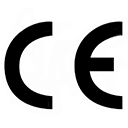Acrel AMC16-DETT Measuring 6 Channel DC Energy Meter
Accuracy: 1%In≤I≤10%In error±2.5%; I>10%In error±2%
Voltage range: -40V~-60VDC
Power consumption: ≤2W( no hall power supply output)
Power supply output: +12V/100Ma, -12V/50mA
Measuring Channel: 6 DC Channel
General
Multi Channel DC Energy Meter is designed for base stations with shared requirements, where the switching power supply does not have subscriber metering. The meter can measure electrical energy and provide operating current to the matching Hall sensor. Also, zero drift calibration can be achieved through the host software. In addition, it has the functions of program metering, remote indication, remote adjustment, real-time metering, power quality abnormality alarm, data storage and processing, and data interaction; the meter can measure the power consumption of three operators and provide detailed data for the base station.
Feature
Multi Channel DC Energy Meter have IP protection level, with the advantages of waterproof and dustproof, and can also adapt to the harsh installation environment. Secondly, with industrial micro-level processing as the core, our data processing is very fast, and we have the reputation of being the king of cost performance. In addition, we also use high-performance metering chip with rich LCD display, using advanced microelectronics technology as well as SMT production process manufacturing, stable performance, rich functions, strong anti-interference ability and other characteristics, can meet the stable operation of long time hanging network.
Detail

.jpg?x-oss-process=image/resize)

Picture on Site
 |
 |
Why Choose Us
We use the latest technology and manufacturing techniques to create top-quality DC Energy Meter products.
We will uphold our business philosophy of 'professionalism, technology, integrity' and be a high-end manufacturer of Multi Channel DC Energy Meter. We will continue to move customers with sincere service and create value for them forever!
Our DC Energy Meter products are available in a variety of sizes and configurations to suit different needs.
The company has always insisted that quality is life and reputation is the principle of development, serving customers at home and abroad and has won a good reputation.
We pride ourselves on offering a wide selection of DC Energy Meter products to suit different needs.
We take innovation as the driving force, professional brand development strategy, and firmly take the road of rapid, coordinated, sustainable and healthy development.
Our DC Energy Meter products are tested rigorously to ensure they meet our stringent quality standards.
After years of hard work, the company has established its own brand and achieved a good reputation.
Our dedication to innovation allows us to develop new and improved DC Energy Meter products regularly.
Our company has been adhering to the quality policy of careful planning, careful production, strict management and continuous improvement to establish a long-term relationship with customers.
|
Input |
DC rated voltage |
1 channel:-48VDC |
|
DC current |
6 channels hall sensors: total 200A/5V, 1,2,3,4 channel reserve 50A/5V, 5th channel reserve 100A/5V. |
|
|
Commercial power monitoring |
1 channel :0-5 VDC |
|
|
Overload capacity |
Voltage:1.2 times continued, 2 times continued 1 s. Current: 1.2 times continued, 10 times continued 1 s. |
|
|
Accuracy (superposition hall sensors) |
1%In≤I≤10%In, error ±2.5%; I>10%In; error ±2% |
|
|
Measurement resolution |
Voltage: 0.01 V, Current: 0.01 A, Power: 0.01 kW, Energy: 0.01 kWh |
|
|
Functions |
Basic function |
1. Monitor device system time; 2. Total voltage, total current, power, energy, each channel voltage, current, power , energy; 3. LED display; 4. RS485 communication; |
|
Metering function |
1. Start current: under rated voltage, when the load current value of the meter doesn't exceed 1% of the max.current, the meter starts. 2. Shunt running current: When there is no current in the current circuit of the meter, and 85%~125% of the rated voltage is applied on the voltage circuit, the calculator shall not have more than one digital change. |
|
|
Alarm function |
DC under-voltage, DC over-voltage, one power down, module voltage loss, metering branch error, internal program error, clock error, memory failure, AC input power failure. |
|














